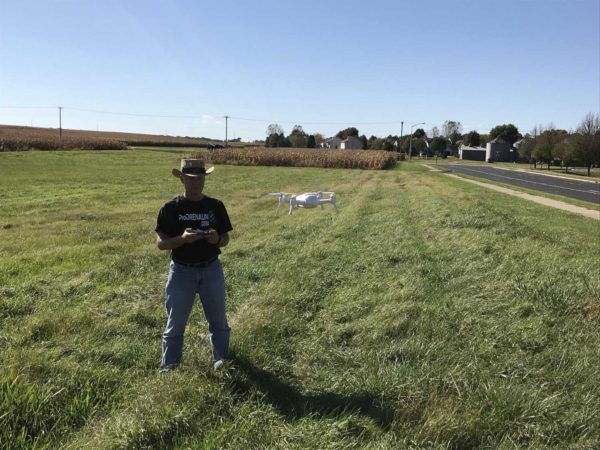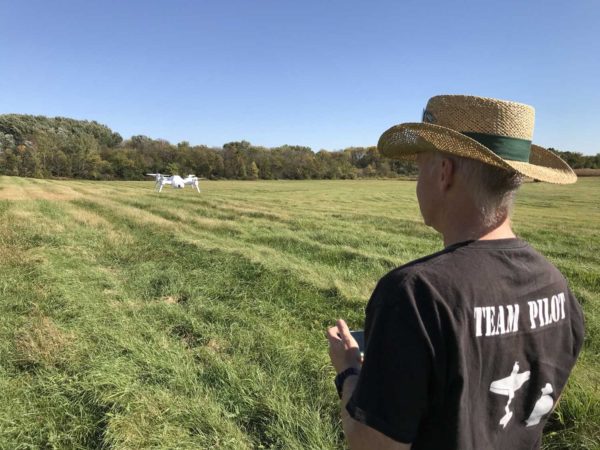By Phil Hinkle
A friend of mine recently got a Yuneec Breeze in for a review. He did a great review and there are lots of technical reviews available online so I didn’t want to review the technical aspects as in-depth as others and instead focus on how useful it really is as I have a lot of UAV and RC plane flight experience.
Since the Breeze has a 4K camera that also shoots stabilized (electronic image stabilization) at 1080p I would review whether a selfie drone could be used for a more cinematic type of shot if the big drone was not available. With a retail price of $399 USD it is not cheap but is cheaper than most larger cinema drones. Maybe you are on vacation with a selfie drone and wanted to make a video after you get home of lots of your images and footage and a few selfie shots would be a fun addition. Can the Yuneec Breeze, in a pinch, supply those shots with the help of the solid post-production image stabilization and CMOS distortion correction functionality found in the ProDRENALIN V2+ Windows or Mercalli EZ Mac software.
The Breeze, by design, is meant for taking selfie pics and video. If you are used to flying anything RC with a standard controller you will quickly realize things are different with the Breeze. All controls are done using your smartphone (but a standard controller is available as an option). It is extremely basic with lots of ‘swipe to start’ instructions. If you have never flown anything before you will probably have no problems as it walks you through every step. There are lots of different options/modes to fly in. The basic Pilot mode allows full control of the Breeze. If you are planning to get some smooth cool footage in this mode it will be challenging. However just setting up a still picture is not too bad.
Still picture quality is ok but not stellar. Probably on par with a standard smartphone camera. With the Selfie Mode selected, the Breeze takes off and flies to a set distance, takes a pic and then flies back to land. It works pretty well but I am more interested with the video quality.

The fun starts when you dive into the advanced modes. There is an Orbit Mode where it will circle around you at a given distance. Does it work? Yes. Does it work well? Sort of. It does circle in either direction, but the camera tends to drift off center pretty easily so at the end of your shot you may not be centered like when you started. In my video clips below you will see it wander about ½ way through. If you only needed a few seconds of an Orbit shot then it could be a valuable asset to your vacation film.

The next mode is the Journey Mode. It took me a few minutes of experimenting to understand exactly what it does. Journey Mode allows the Breeze to hover at about a meter of height in front of you. Once you start the Journey Mode it counts down so you can pose and get ready. When it hits zero the drone flies backwards to a predefined distance and height then flies back and hovers in front of you till you hit land. I have seen lots of people do these selfie flyaway shots in videos and thought they were pretty nice for an ‘ending shot’ of a video. The Breeze automates this for you. Of the different options on the Breeze I found the Journey Mode to be the most useful and have the best potential for a cool cinematic type of shot coming from the Breeze. As you can see in the videos below the Journey Mode looked pretty good when stabilized and I felt was very usable. I would not use it in a corporate project or a large production but for a home video or something fun it worked really well.

Next is the Follow Mode. In this mode the Breeze will follow you around as long as you are carrying your smartphone. It relies on the GPS signal of your smartphone. You can see in my video that footage walking away and letting the Breeze follow you worked pretty well even when I started Jogging. ProDRENALIN V2+ did a good job of making it a solid shot. However, when I tried to walk through the field with the Breeze flying sideways and tracking me from the side it could not keep up well and I was always moving toward the front of the scene. I tried in both directions and even with the Breeze at a light angle to give me walking room and it still could not keep up. In my opinion the Follow Mode is useful only in specific conditions.
Those are the main modes on the Yuneec Breeze. Some work well and others are somewhat useful. Overall would I like to have a Breeze in my arsenal of tools? I would probably pass on it because the controls are clunky and only one mode seemed somewhat useful, but again, I’m an event videographer and the things I need most are very different from a more casual user.
Here are some video clips showing the breeze and post production quality. The first video shows the original raw video clips of the different modes. The second video shows a side by side of the original and the stabilized footage from ProDRENALIN V2+.
Does this mean all selfie drones are the same?
There are a few other higher end quality selfie drones on the market. One is by a company called Xiro (I own the Xiro Explorer V full sized camera drone and it is a good basic setup). Their selfie drone called the Explorer Mini retails for $399 USD. This is the same price as the Breeze. Quality wise and camera wise they are on the same level of quality however the Xiro Explorer Mini does have folding arms so it can be folded into a smaller package and carrying it along will be more convenient. Without having that camera on a gimbal, just like on the Breeze, you are limited more to still images and an occasional short video that will probably need some post-production stabilization. In the $399 price range I would probably lean toward theXiro Explorer Mini.
There is one other selfie drone on the market that has a little more promise but a bigger price tag. The DJI Spark which retails at $499 USD for the base model and there is a Fly More combo that includes a controller, extra battery and other accessories. The big difference on the Spark that adds to the prices is the camera is mounted on a fully functional 2-axis gimbal. This should make your footage much more usable if needed in a video. However, at those prices you are getting into the price points of many full-blown cinema drone packages. For sheer portability though it seems to do the trick and the footage should be much more solid to be used in a production. If DJI wants to send me a Spark to test I will be happy to put it to the test and report back on how well it could be used, if needed, for a cinematic type of shot.
Summary
Selfie drones have a purpose and a market. I believe that market is much smaller than the mainstream camera drone or the cinema drone market. Most people spending that much on a drone are going to want something more capable in more scenarios. The DJI Phantom 3 Standard is still available and shoots great video in 1080p for only $499. The Breeze is a cute little machine that does some things well and lots of other things very mediocre. While it’s not a drone I would use it may be perfect for someone who just needs a simple to operate craft to snap some pictures when off on vacation or out for some weekend fun.

Leave a comment